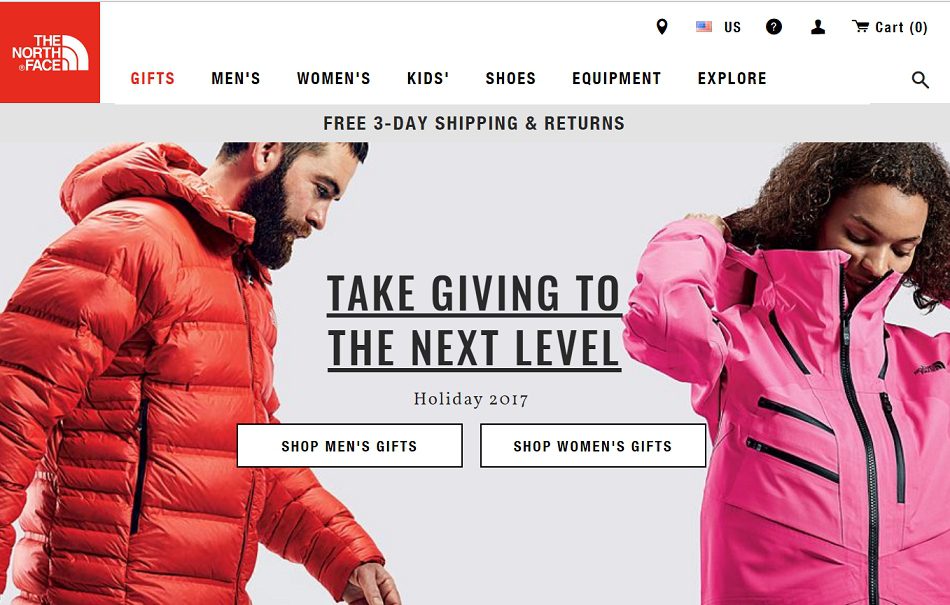Less than one in four (22%) of global brands are providing a “good” or “excellent” customer experience, according to a report from Astound Commerce that examined both web and store performance. Many brands lag in merchandising execution and self-service, although a number of site search capabilities are improving.
The top performing brands include:
Store-Based:
Advertisement
- The North Face (Combined score of 71.25 out of 100);
- Under Armour (70.50);
- Apple (68.50);
- Tory Burch (68.00);
- Toms (68.00);
- Steve Madden (67.75); and
- Nike (65.75).
Online-only:
- Lancôme (Adjusted 71.56);
- Bobbi Brown (68.44) and
- Samsung (68.44).
“You have to excel on all fronts,” said Lauren Freedman, Senior VP of Digital Strategy at Astound Commerce in an interview with Retail TouchPoints. “A lot of the store-based winners, such as Apple, have long been involved with e-Commerce. Nike has long been in the direct-to-consumer business, and they’ve worked at it for years to manage their business. The North Face is one of the first manufacturers that I can remember to have buy online/pick up in-store.”
Many Brands Struggle To Merchandise Effectively
One major problem for the 78% of brands offering average or below average customer experiences: merchandising is often limited in execution. While 86% of the studied brands have a “What’s New” section listed on their site, no other category had more than 54% adoption (themed/seasonal areas).
“The merchandising tactics really took a back seat,” Freedman said. “I realized that when I was looking at one brand that its web site looked amazing. Then as I dug in, I realized they had no merchandising, because they probably don’t have any merchandising resources internally. If you look at the adoption of the merchandising, it’s very low among categories such as exclusives (38%) and even top sellers (40%), which would be a standard in B2C selling. While they can make themselves look very good from a front-page-facing perspective, it’s hard to have the in-depth merchandising sophistication that people who’ve been in the space 15 to 20 years would have.”
Four Fundamentals Retailers Must Invest In
Often, these brands are competing with larger retailers — whether it is home brands vying with The Home Depot or beauty companies with Sephora — and therefore they must make significant investments to keep up. Freedman noted that these brands need to focus on investing in four major fundamentals: product information, imagery, on-site search and customer service.
“Many of these companies have to measure the current state of their business,” Freedman said. “I don’t think this is a one-size-fits-all answer. Execs and employees need to shop their own site and get a sense of it and evolve. They don’t have to become a 10, but [they do need to] try to evolve from a merchandising and a customer service perspective.”
Product Search Matures, With Half Of Brands Going Visual
On-site search is becoming more sophisticated, which is vital for brands since 65% of global shoppers rank it as very important. Many brands are now including the following search features:
- View all (84%);
- Type ahead/autocomplete (76%);
- Selection via search result categories, such as “What’s New” and “Top Sellers” (62%); and
- Quick view (62%).
Half of all brands now have some form of visual search available, while another 48% are building out product videos to enhance product pages.
“Visual search is going to grow,” Freedman said. “When people see a particular product…whether an iPhone or a pair of Toms shoes…they get a feel for what they like. It’s an efficiency model for the shopper, so I expect more brands to use the technology. Video will be a mixed bag, because for some brands, it might be interesting, but they’re not going to invest in it because they’re probably not going to see the conversion or ROI that they want off of it. Given the nature of the brand, it will be effective for some. If I sell a stroller or a car seat or there is a particular computer that I want to show, then I think it has a lot of value.”
Self-Service Needs Improvement
While on-site search continues to improve in many ways, self-service capabilities could still use some work. For example, only 32% of brands have searchable FAQs on their site, making it difficult for consumers to find answers quickly without contacting customer service. Additionally, only 60% of brands have their phone number visible on the home page, meaning shoppers have to take more time to find out how to contact a brand when they have an issue.
“What happens with self-service is that brands put it on their site and then they don’t look at it again,” Freedman said. “First, they need to revisit these destinations, and then they need a stronger depth of content and links so that it’s easier to get into the different areas of interest. Layouts could be more user-friendly, and lastly, stepping up conveniences such as online return processing (which saw 26% adoption). It’s all about accessibility, transparency and making it an engaging experience for the shopper.”
To compile data for the report, Astound Commerce Insights measured the branding, customer experience and services of 50 brands delivered through 206 metrics across eight common shopping scenarios — including site browsing, product search, customer service access and queries — and visiting physical stores in the Chicago market when available.
- View all (84%);
- Type ahead/autocomplete (76%);
- Selection via search result categories, such as “What’s New” and “Top Sellers” (62%); and
- Quick view (62%).









